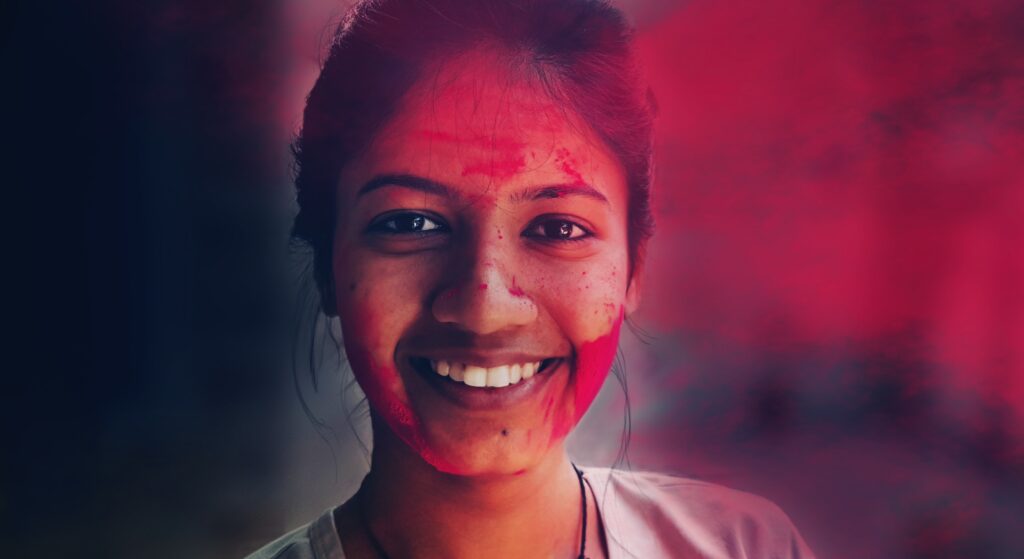Indian dimples rarity is a fascinating topic that has captured the attention of many individuals worldwide. The presence of dimples on Indian faces is often seen as a symbol of beauty, charm, and uniqueness. However, not everyone is aware of the science behind this phenomenon or its cultural significance. In this article, we will delve into the rarity of Indian dimples, their genetic factors, and the cultural perceptions surrounding them.
While dimples are commonly associated with Indian beauty standards, their occurrence is relatively rare compared to other facial features. This rarity adds to their allure and makes them a subject of interest for both scientific and cultural exploration. Understanding the genetic and environmental factors that contribute to the formation of dimples can provide valuable insights into human diversity.
This article aims to provide a comprehensive overview of Indian dimples rarity, including their genetic basis, cultural significance, and societal perceptions. Whether you're curious about the science behind dimples or simply fascinated by their charm, this article will offer valuable information and insights. Let's dive in!
Read also:Forest Whitaker Eye A Comprehensive Look Into His Remarkable Journey And Health Insights
Table of Contents
- The Genetic Basis of Indian Dimples Rarity
- Cultural Significance of Indian Dimples
- Scientific Studies on Dimples Rarity
- Historical Perspective on Indian Dimples
- Famous Indian Celebrities with Dimples
- Statistics on Indian Dimples Rarity
- Social Perception of Indian Dimples
- Myths and Facts About Indian Dimples
- Health Implications of Dimples
- Conclusion
The Genetic Basis of Indian Dimples Rarity
Indian dimples rarity can be attributed to genetic factors. Dimples are primarily caused by a variation in the facial muscle known as the zygomaticus major. This variation creates a small indentation on the skin when a person smiles, resulting in the appearance of dimples. While dimples can occur in people of all ethnicities, their prevalence varies significantly across populations.
Studies have shown that dimples are a dominant genetic trait, meaning that if one parent has dimples, there is a higher likelihood that their children will inherit this trait. However, the rarity of dimples in Indian populations suggests that other genetic and environmental factors may also play a role in their formation.
Genetic Variations and Dimples
Research has identified specific genetic variations associated with the presence of dimples. These variations can influence the structure and function of facial muscles, leading to the development of dimples. Some studies suggest that multiple genes may interact to determine the presence and appearance of dimples, making their occurrence more complex than initially thought.
Cultural Significance of Indian Dimples
In Indian culture, dimples are often seen as a symbol of beauty, charm, and good fortune. They are frequently depicted in art, literature, and media as a desirable facial feature. The cultural significance of dimples can be traced back to ancient times, where they were considered a sign of divine favor and grace.
Dimples in Indian Cinema
Indian cinema has played a significant role in popularizing the image of dimples as a symbol of beauty. Many famous Indian actors and actresses with dimples have become cultural icons, further cementing the association between dimples and attractiveness. This cultural perception has influenced societal norms and beauty standards in India and beyond.
Scientific Studies on Dimples Rarity
Several scientific studies have explored the rarity of dimples in Indian populations. These studies aim to understand the genetic and environmental factors that contribute to the formation of dimples and their prevalence in different ethnic groups.
Read also:Where Is Virgin River Filmed Discover The Stunning Locations Of This Beloved Series
- One study conducted by researchers at the Indian Institute of Science found that dimples are present in approximately 20% of the Indian population.
- Another study published in the Journal of Human Genetics highlighted the role of genetic variations in the development of dimples.
These studies provide valuable insights into the science behind dimples and their rarity in Indian populations.
Historical Perspective on Indian Dimples
The history of Indian dimples rarity can be traced back to ancient times, where they were considered a symbol of divine beauty and grace. In Hindu mythology, dimples were often associated with deities such as Krishna and Radha, who were depicted with charming smiles and dimples.
Dimples in Ancient Indian Art
Ancient Indian art and sculpture frequently depicted figures with dimples, emphasizing their cultural significance. These depictions reflect the enduring appeal of dimples in Indian culture and their association with beauty and charm.
Famous Indian Celebrities with Dimples
Many famous Indian celebrities are known for their charming dimples, which have contributed to their popularity and success in the entertainment industry. Below is a list of some of the most famous Indian celebrities with dimples:
- Aishwarya Rai Bachchan
- Deepika Padukone
- Salman Khan
- Shah Rukh Khan
These celebrities have become cultural icons, further reinforcing the association between dimples and beauty in Indian society.
Statistics on Indian Dimples Rarity
Statistical data on the rarity of dimples in Indian populations provides valuable insights into their prevalence and distribution. According to recent studies:
- Approximately 20% of the Indian population has dimples.
- The prevalence of dimples varies significantly across different regions and ethnic groups within India.
These statistics highlight the unique genetic and cultural factors that contribute to the rarity of dimples in Indian populations.
Social Perception of Indian Dimples
The social perception of Indian dimples rarity is shaped by cultural norms, media representation, and societal values. In many Indian communities, dimples are seen as a desirable facial feature that enhances attractiveness and charm. This perception has been reinforced by the portrayal of dimples in Indian cinema and media.
Impact of Media on Dimple Perception
The media plays a crucial role in shaping societal perceptions of beauty and attractiveness. The frequent depiction of celebrities with dimples in Indian films and advertisements has contributed to the widespread acceptance and appreciation of dimples as a desirable trait.
Myths and Facts About Indian Dimples
There are several myths and misconceptions surrounding Indian dimples rarity. Below are some common myths and facts about dimples:
- Myth: Dimples are always inherited from parents.
- Fact: While dimples are a dominant genetic trait, their occurrence can be influenced by other genetic and environmental factors.
- Myth: Dimples are only present in certain ethnic groups.
- Fact: Dimples can occur in people of all ethnicities, although their prevalence varies across populations.
Understanding the facts about dimples can help dispel common misconceptions and provide a more accurate understanding of their rarity.
Health Implications of Dimples
While dimples are generally considered a cosmetic feature, they can have certain health implications. For example, some studies suggest that individuals with dimples may be more prone to certain dental or facial conditions due to the structural variations in their facial muscles. However, further research is needed to fully understand these potential health implications.
Consulting a Specialist
If you have concerns about the health implications of dimples or other facial features, it is advisable to consult a healthcare professional or specialist for personalized advice and guidance.
Conclusion
Indian dimples rarity is a fascinating topic that combines elements of genetics, culture, and societal perception. Understanding the science behind dimples and their cultural significance can provide valuable insights into human diversity and beauty standards. Whether you're fascinated by the genetic basis of dimples or simply admire their charm, this article has explored various aspects of Indian dimples rarity in detail.
We invite you to share your thoughts and experiences in the comments section below. Do you have dimples? What do you think about their cultural significance? Don't forget to explore other articles on our website for more interesting topics and insights!


